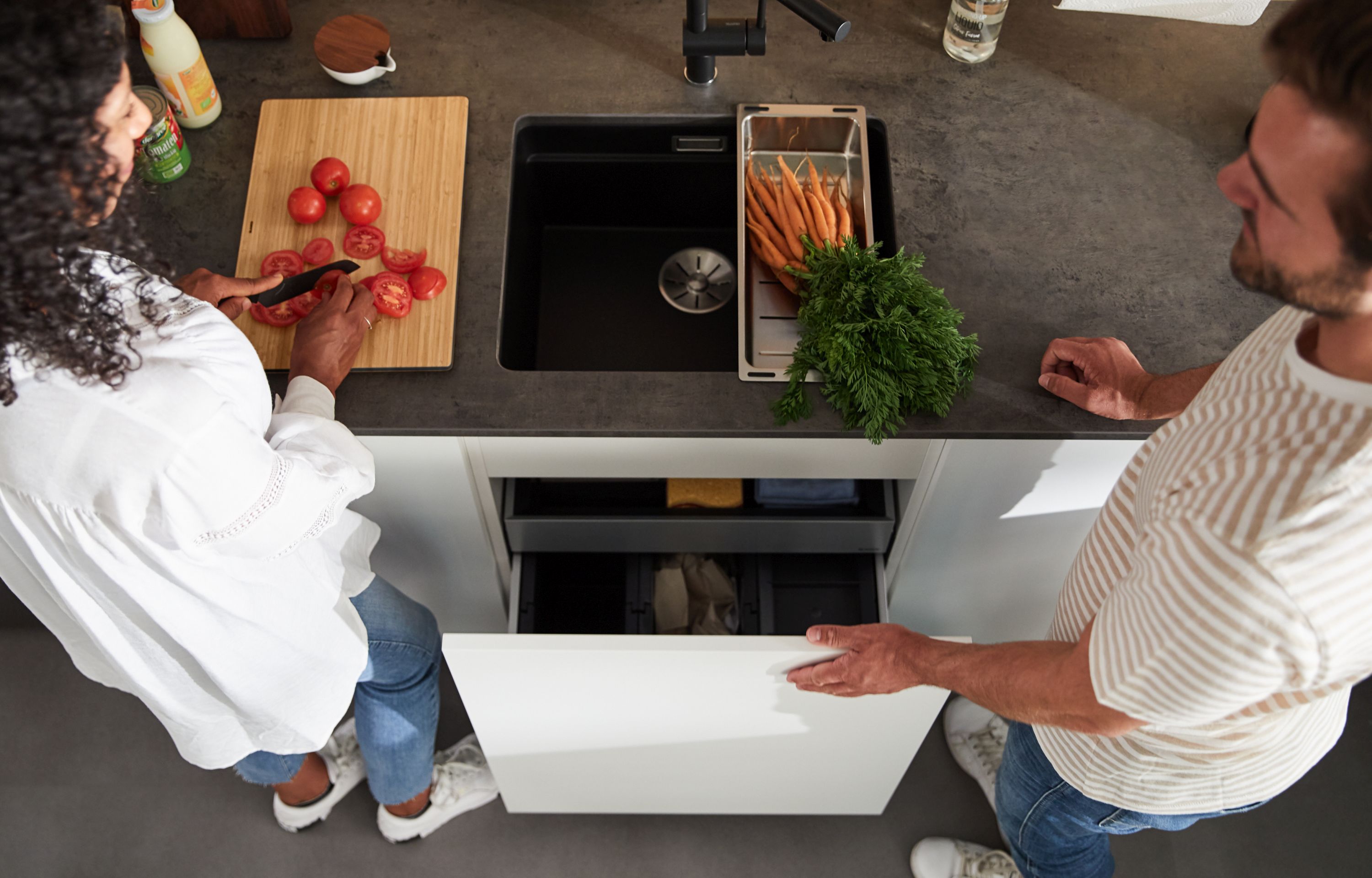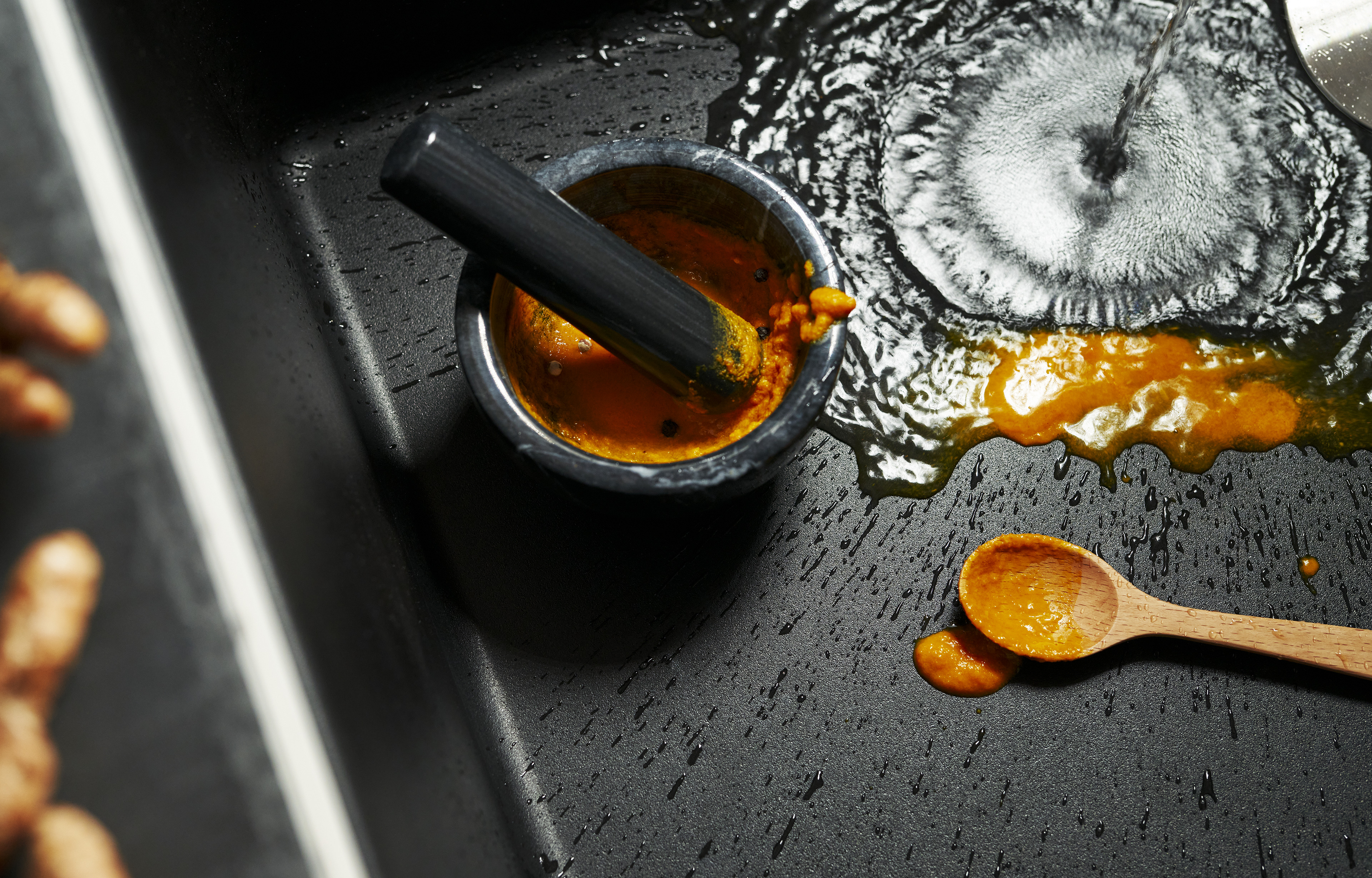Chopping Boards
How to look after them properly
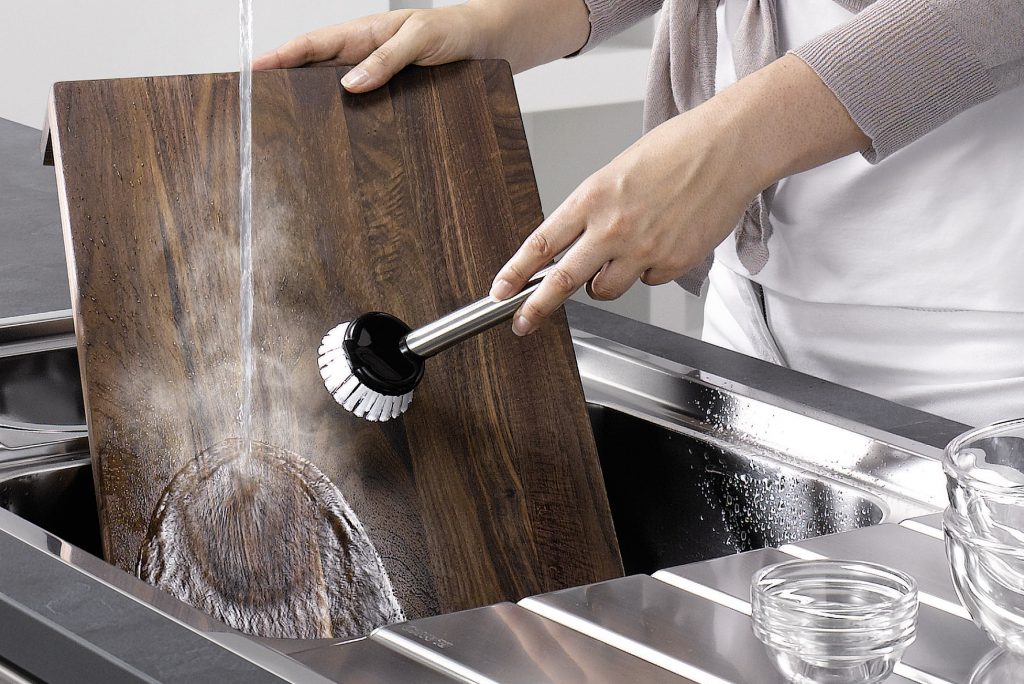
In every kitchen food is prepared and then eaten later. Chopping boards are an indispensable aid. They serve as a base and storage surface when preparing ingredients. Foods like fish or meat are often raw. They are usually not heated before being cut. Moreover, they have passed through countless hands and are usually covered in germs. As such, you need to pay attention to hygiene.
Generally speaking, the recommendation is to separate raw meat and fish from other foods. Even chopping boards with supposedly antibacterial surfaces should not mislead you into abandoning the rules of hygiene in the kitchen.
You should care for the material in the appropriate way. This will protect against permanent discolouration and marks, reduce odours and, above all, prevent the development of germs.
It is advisable to use a glass or plastic chopping board when preparing meat, fish or intense-smelling foods like onion or garlic. This kind of smooth surface is also ideal for working with foods with strong dyes, as they do not absorb any of the colour and are thus protected against marks.
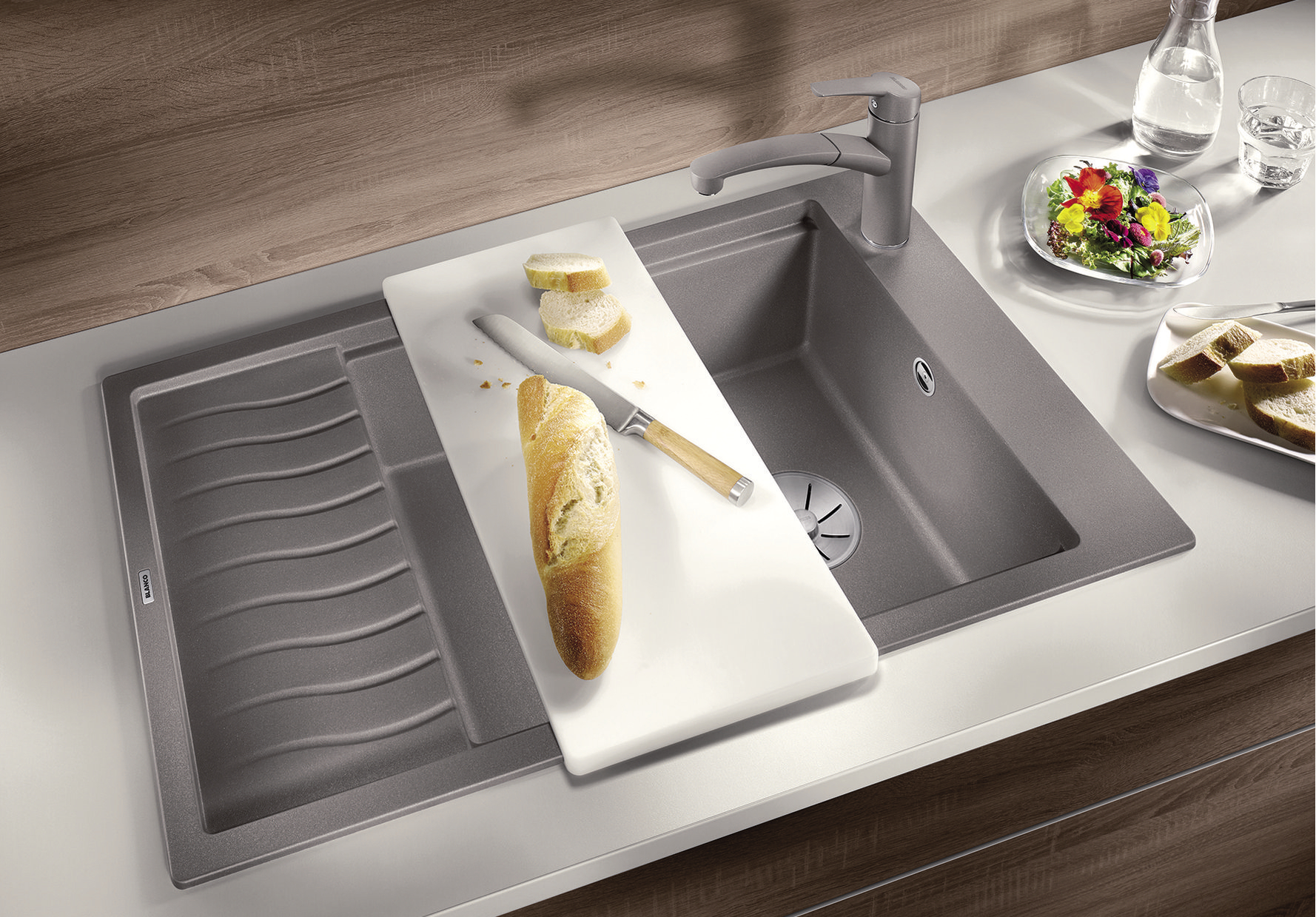
Plastic chopping boards are popular in professional kitchens
Plastic chopping boards are a firm fixture in many kitchens. They are even popular in professional kitchens, as they are suitable for dishwashers and are impervious to water. These properties make them great for long-lasting use. Their soft surface preserves expensive knives and remains odourless. In terms of hygiene, plastic is often highlighted as being particularly safe as a cutting surface. As long as no deep grooves have been cut into the board and it is thoroughly cleaned, the material is indeed very suitable. When cleaning, be sure to use hot water and use a simple vinegar-based cleaner or washing-up liquid. We strongly advise against the use of disinfectants for chopping boards. The board should be replaced when there are grooves in it or it has permanent discolouration. Cuts are difficult to dry and form a good breeding ground for germs, which are an unwelcome guest in the kitchen given that you’re dealing with raw food.
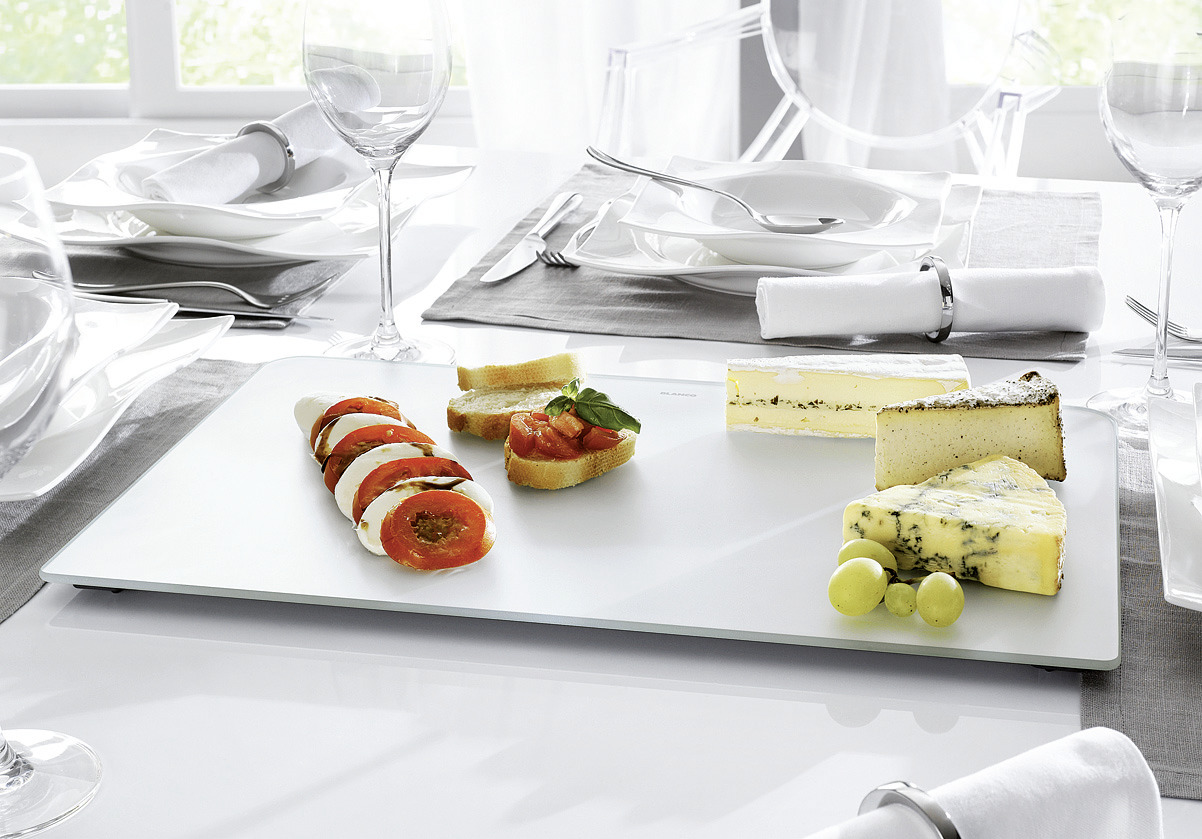
Glass chopping boards are suitable for serving food
As glass boards are generally made of safety glass, they are heat-resistant and impervious to water. This is an advantage over other materials. They are suitable for dishwasher use and should be rinsed at high temperatures to completely kill off germs. They are primarily suitable for placing things and serving food. If you are going to be using a glass board as a chopping surface, it’s worth getting a separate plastic cover. This will spare your knife blades and is also suitable for dishwashers at up to 65 degrees. These flexible covers are food-safe and can be used with all boards.
The classic wooden chopping board
From rustic to sophisticated, wooden chopping boards come in all sorts of different designs. The wood determines the look of the board. Yet oak, walnut, beech and pine don’t only differ in appearance: the different wood varieties also differ in their surface, stability and tannins. The physical properties of the wood, including its compressive strength, determine how susceptible it is to becoming grooved by knives, and how quickly a knife will become blunt. The compressive strength of hard beech, for instance, is 660 kp/cm², while walnut is a much softer wood, at 580 kp/cm². If you work with particularly expensive and sharp knives, you should opt for a soft wood like walnut or pine, although these have the downside that they will become marked more quickly. Such grooves also lead to the build-up of germs. But as a natural material, wood has a trump card up its sleeve
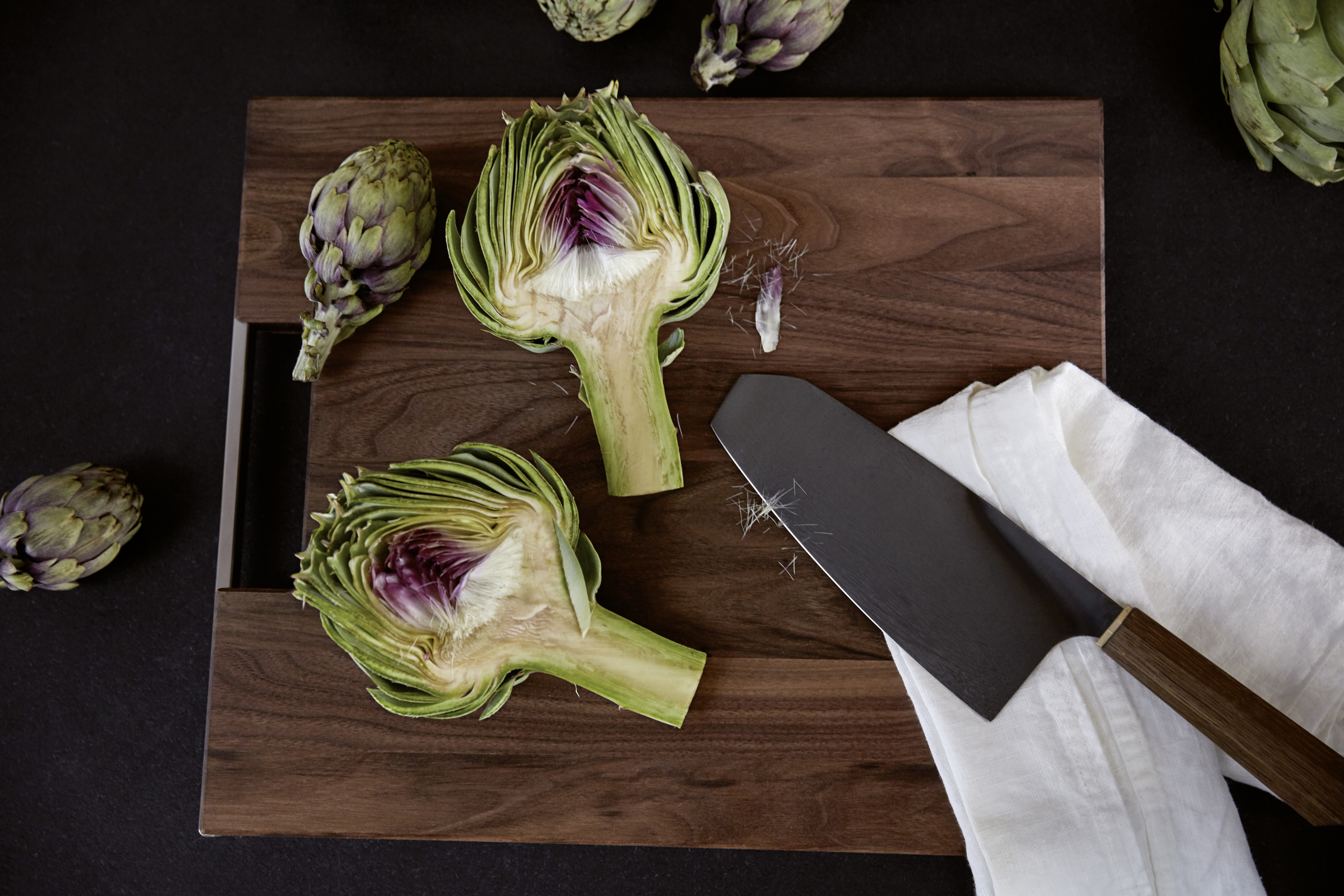
Wood has an antibacterial effect
The wood’s own tannic acid, which is released with each fresh cut, has an antibacterial effect. The amount of tannic acid is particularly high in pine wood, for which reason pine is a popular wood for chopping boards, despite its soft surface. Find out more at: Why wood is effective at combating bacteria However, you shouldn’t rely on the tannic acid or indeed tannins when it comes to hygiene.
You are advised to care for boards by washing them thoroughly with hot soapy water after every use and allow them to dry standing completely upright. One natural cleaning alternative that has proven itself to be effective even in case of discolouration is to rub the board with rough sea salt and half a lemon. Most germs are not resistant to drying and can be killed off if they are dried enough.At the same time, you must make sure that the wood doesn’t dry too quickly, as otherwise it is at risk of becoming warped.And what use is a curved chopping board?
If lots of deep grooves have formed in the wooden block, it’s worth sanding off the top layer. After subsequent cleaning and drying, the wood can be saturated with oil in order to prevent the ingress of water and discolouration. After being left to take effect for a couple of hours, any excess oil can be wiped off with a cotton cloth, leaving the board gleaming and awaiting its next use.
